Innovative Technology
Our process provides a better, stronger, sustainable solution. We have brought unprecedented breakthroughs in HOCL technology that has pushed the science of HOCL forward to meet rapidly increasing population demands.

Water & Salt

Novel Resin Technology

Ion Exchange Technology

Next-generation formulations of HOCL
Hypristine Overcomes Challenges In Traditional HOCL Manufacturing
Traditional HOCL manufacturing using electrolysis is fraught with challenges including the generation of toxic byproducts and less stable HOCL. Hypristine’s novel patented HOCL manufacturing technology has brought unprecedented breakthrough to HOCL manufacturing.
HOCL is traditionally manufactured by electrolysis of sodium chloride (NaCl) and water to generate HOCL. Unfortunately, this method of manufacturing is widely known to lead to an unstable HOCL product that creates challenges to its distribution and application.
Another significant disadvantage in manufacturing of HOCL by electrolysis is the generation of hazardous byproducts including sodium hydroxide, hydrogen gas, chlorine gas, ozone and traces of other nascent oxidants.
Toxic byproducts produced by the traditional electrolysis process lead to challenges in appropriate disposal, potential environmental hazards and health & safety risks.


Engineering The Next-Generation of HOCL Manufacturing Plants
In partnership with the National University Singapore (NUS), one of the world’s foremost institutions – we are proud to debut the next-generation of HOCL manufacturing plants in North America using patented technology.
We have built North America’s first HOCL manufacturing plant utilizing novel patented technology first developed by the National University Singapore (NUS). Our team of scientists, engineers and technologists further developed and rigorously tested this technology in partnership with the NUS to cater for the increasing demands of the North American market. Our technology utilizes an ion exchange process and novel resin technology that yields a stable HOCL product without toxic byproducts that has now set new industry standards.
Unparalleled Product Performance Using Breakthrough Technology
Our next-generation HOCL manufacturing technology enables large-scale production with much greater control of product stability including pH control. This yields unparalleled all-round product performance characteristics that is unmatched by HOCL generated using traditional electrolysis. Additionally, our technology eliminates the generation of any toxic byproducts dramatically reducing environmental, disposal and health & safety challenges inherent of traditional manufacturing techniques.
Exceptional product stability: We produce HOCL superior in stability, purity and efficacy that has the power to influence biochemical processes in humans, animals and microbial organisms with tangible public health relevance.
Large scale production capacity: Our technology and manufacturing plant is capable of mass production of high-quality HOCL. We utilize strict quality-control measures that ensures consistent high-performance product.
Continual Research & Development (R&D): We are continually researching, developing and improving our technology and manufacturing process to create the finest HOCL product in the world. We are committed to developing HOCL solutions for new biological threats and humanitarian needs, and to meet increasing population demands for a better world.
